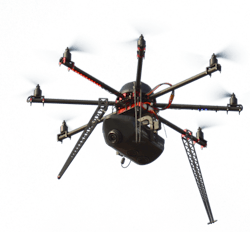How Drones Can Enhance Mine Safety
Although it is almost impossible to know what the conditions are inside an unstable area in a mine, operators can use a drone to fly into these areas and collect crucial data that can inform safety decisions, and also help identify remaining ore.
According to a story in Commercial UAV News, the main types of data collected by drone in mining are visual data (pictures and video) and LiDAR data (data that can be used to create maps of an area). Visual data can provide immediate insights into how safe a section of a mine is to enter.
In Timmins, Ontario, Canada, at the Kidd Mine, Geoff Helluin of Unmanned Aerial Services Inc. described a time when a section of a mine had flooded, and it was hard to tell how deep the water was and how far back the flooding had penetrated. Using Flyability’s Elios 2, he was able to fly along the surface of the water, following the flood deep into the recesses of the mine so that he could tell how safe it was to go back there.
Visual data can also be processed into 3D models using photogrammetry, which can provide more detailed information for making safety determinations.
LiDAR can push the situational awareness enabled by drone data even further, allowing mining personnel to create maps of key areas.
More and more, mining operations are turning to drones equipped with LiDAR sensors to create 3D models. LiDAR can provide real-time mapping, allowing mining personnel to get immediate data on the conditions inside of unstable areas. This data can then be processed later using 3D mapping software to create a detailed digital twin of the area.
Read the entire piece from Commercial UAV News here.
Source: Commercial UAV News
